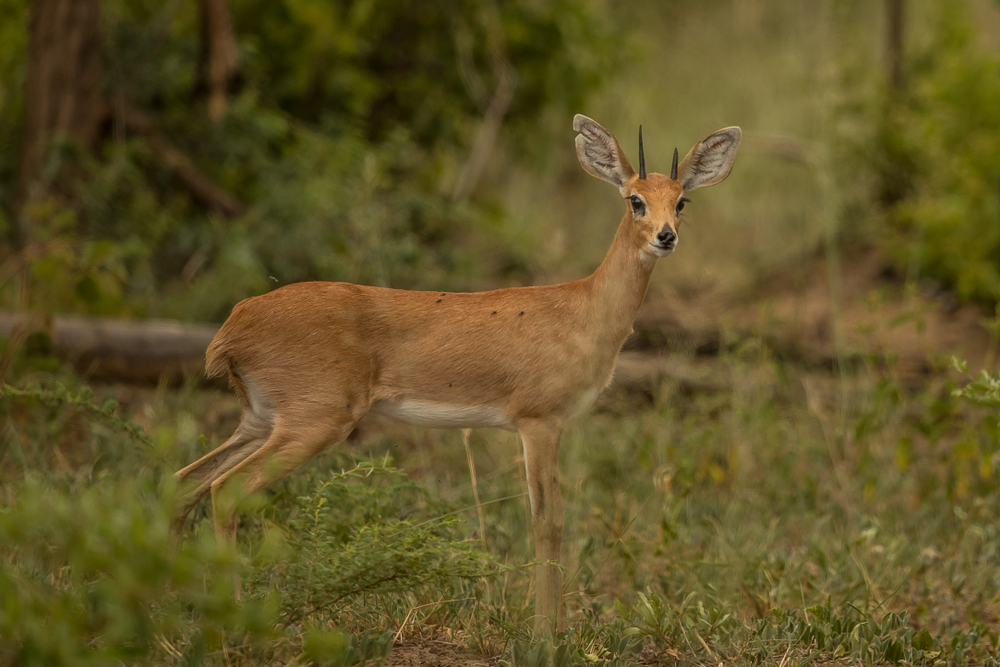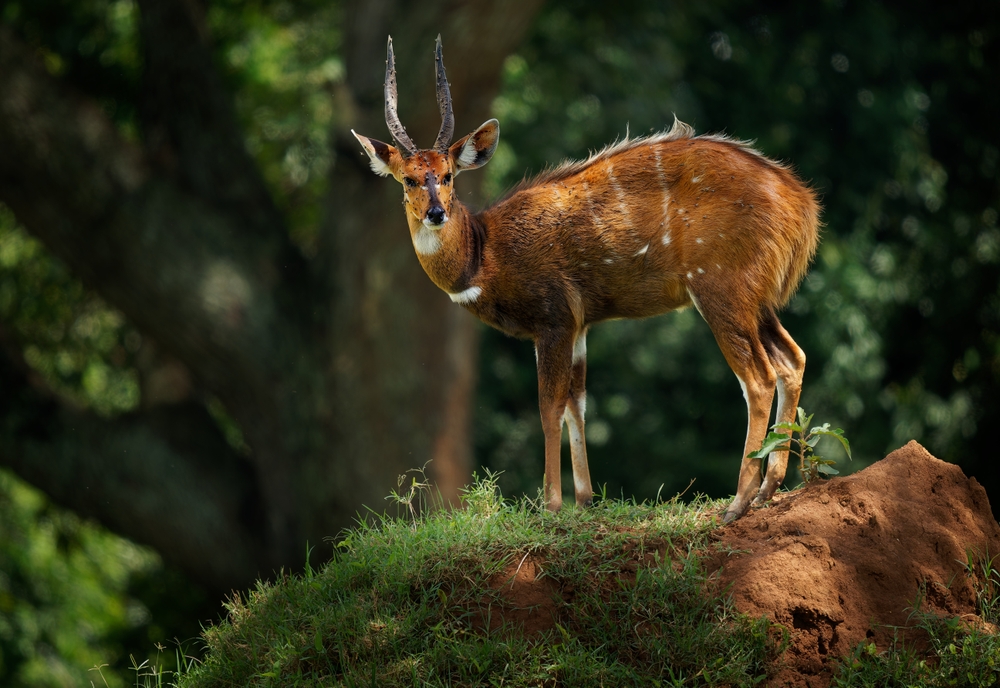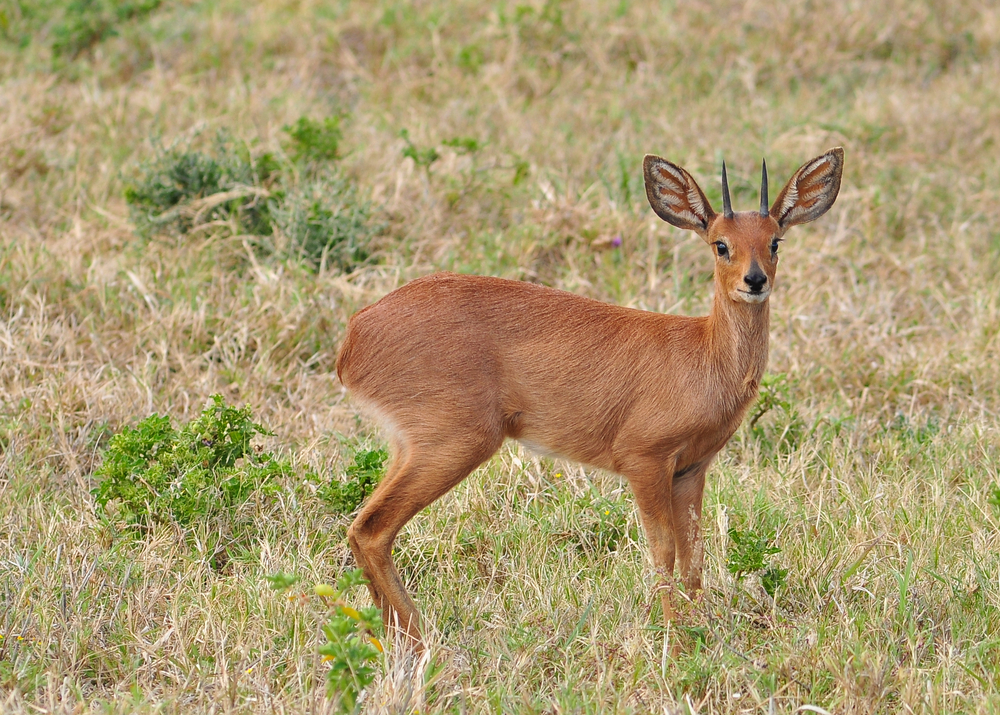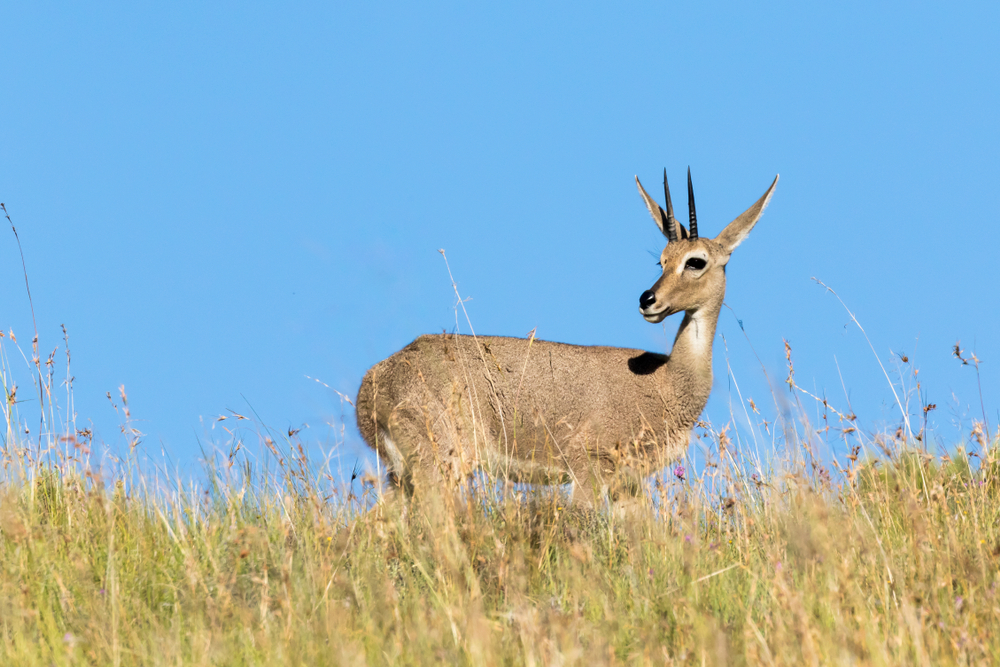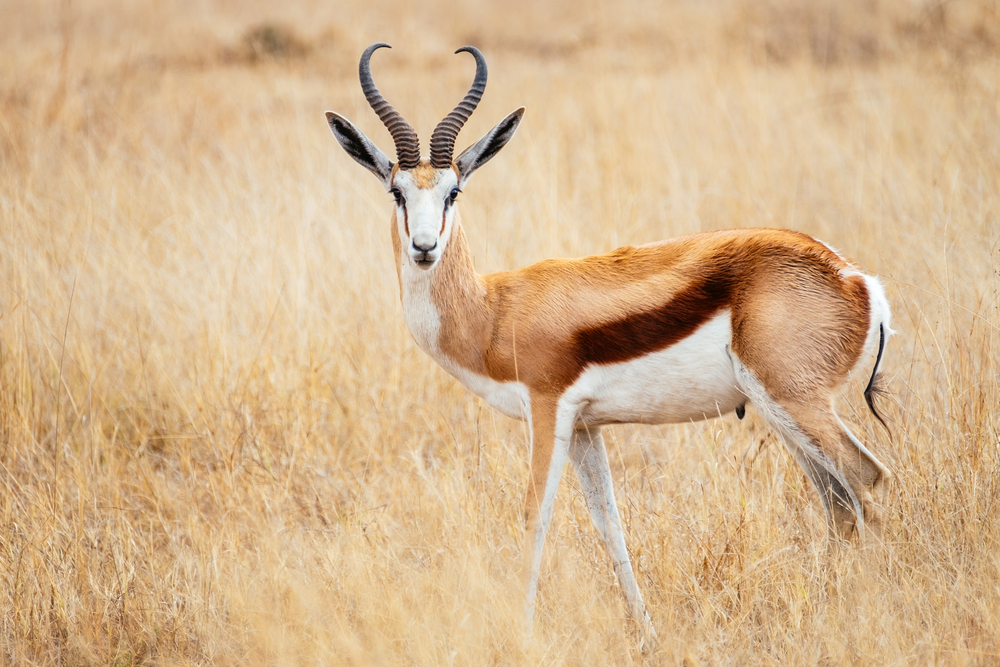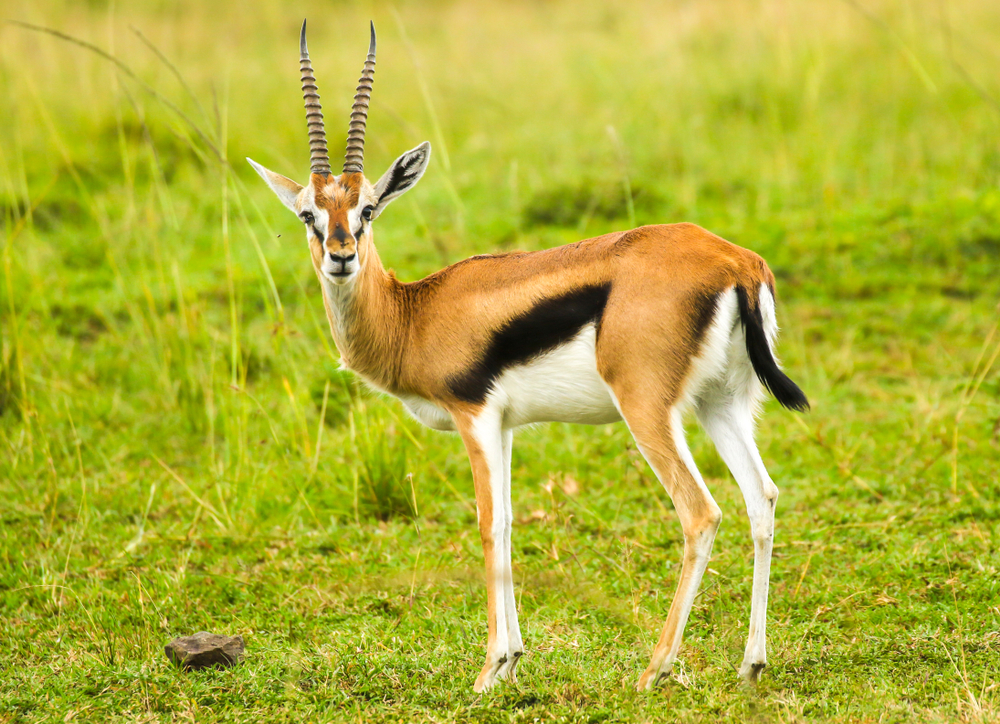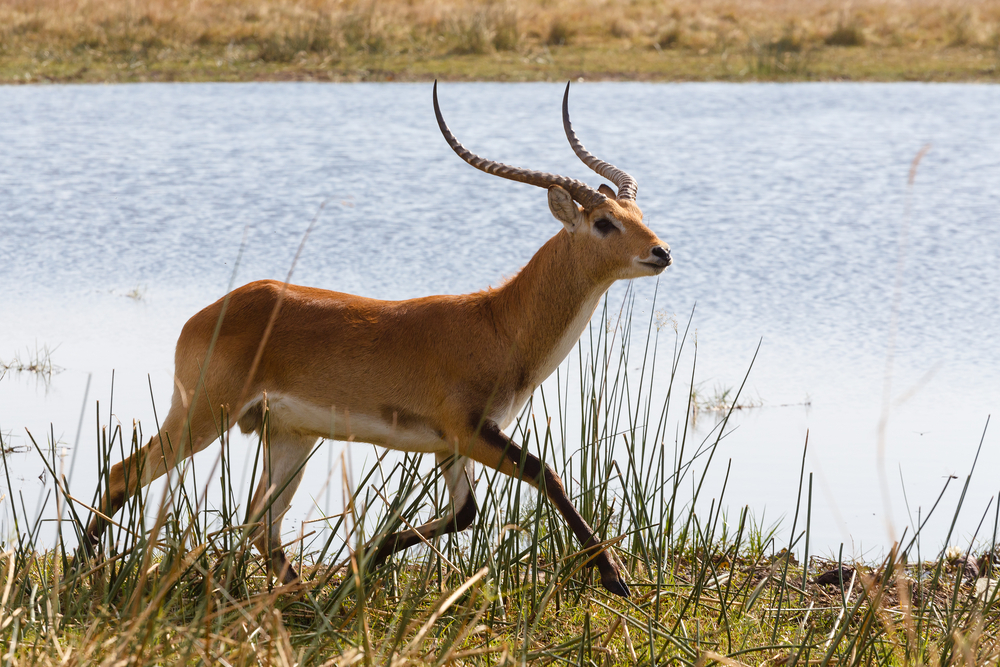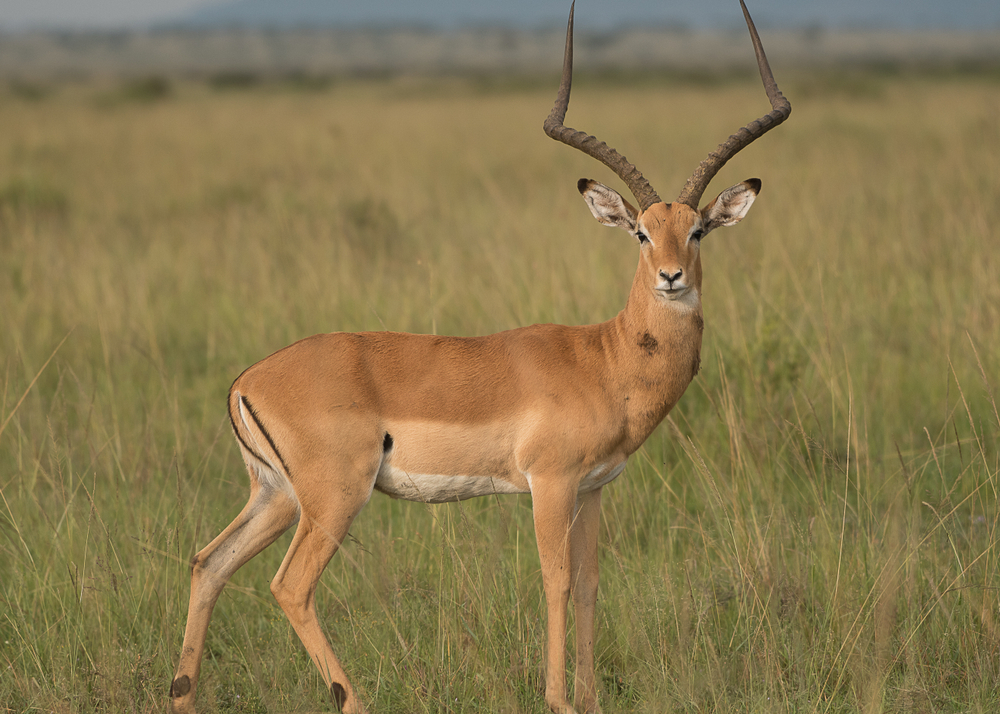Uniqueness
Exceptional Solitary Lifestyle:
The Steenbok is one of the few African antelope species that is truly solitary. Even in mated pairs, individuals typically maintain separate territories and interact only briefly for breeding. This solitary behavior, combined with an instinct to freeze and flee rather than run in herds, makes them one of the most independent antelope on the continent.
Waterless Survival:
Steenbok are uniquely adapted to dry and semi-arid environments, including the Kalahari Desert. Unlike most antelope, they do not need to drink water, instead extracting all necessary moisture from succulent plants, fruits, and roots. This allows them to survive in areas where permanent water is scarce or absent.
Underground Foraging Behavior:
A rare and distinctive trait among antelope is the Steenbok’s ability to dig for roots and tubers. Using their forelegs to excavate nutritious underground food sources, they exhibit a behavior more commonly seen in warthogs or aardvarks than in browsing antelope. This skill is vital for dry-season survival and sets them apart from other small grazers and browsers.
Miniature Elegance with Big-Ear Adaptation:
Steenbok are noted for their large, upright ears, which serve dual purposes: acute hearing for early predator detection and thermoregulation in hot climates. Their elegant build—small, long-legged, and upright—gives them a distinctive profile in open terrain, often described as gazelle-like in miniature.
Freeze-then-Flee Strategy:
Instead of fleeing at first sign of danger, Steenbok often freeze in place, blending into the grass or low scrub. This motionless strategy helps them avoid detection by predators. When escape is necessary, they employ a high-speed, zigzag dash to confuse and evade pursuers—behavior that is both unique and highly effective.
Territorial with Minimal Aggression:
Unlike many territorial antelope that engage in intense horn battles, Steenbok maintain their territories using scent marking and dung middens, not physical confrontation. Their small horns and avoidance of combat reflect a low-conflict strategy suited to a solitary, resource-conserving lifestyle.
Broad Ecological Range:
The Steenbok thrives across an impressive array of ecosystems—from arid deserts and bushveld to grasslands and light savannas. This wide habitat tolerance, combined with behavioral adaptability, makes it one of the most successful small antelope species across eastern and southern Africa.
The Steenbok’s combination of water independence, solitary behavior, underground foraging, and quiet elegance makes it one of Africa’s most distinctive and resourceful antelope. Though often overlooked due to its size and shyness, it exemplifies ecological resilience and adaptive brilliance in challenging environments.



































































